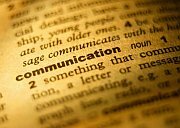Split Blackjack Strategies and Never Tips
by Frank Scoblete
This lesson teaches split blackjack strategies along with some ‘never’ tips at Learn to Play Blackjack program.
Blackjack is a game where your choices count and that includes when you should split blackjack.
Always split aces and eights, no matter what the dealer has showing. This strategy is a delight when the dealer is showing a 6 as his upcard. Who doesn’t want to get more money out when the dealer is in such a disadvantageous situation?
But this same split blackjack strategy can be extremely hard when you are facing an upcard of 10 because you think that if he has another 10 in the hole, you are dead meat.
There is a strong enough argument for the fact that chances are he doesn’t have another 10 in the hole. Even basic blackjack math tells us that the 10s make up a mere 16 cards out of 52 cards.
Therefore it is far more likely that the dealer has anywhere from a 2 through a 7 than he does a 10. Those 8s against a 10 are a losing hand, but using split blackjack strategies always loses you less in the long run.
Split Blackjack has its 'nevers' as well.
For example, never split a pair of 10s or 5s. A hand of 20 is the third most powerful hand for the player, behind a blackjack and a multiple-card 21. The chances of getting two 10s on your split 10s are not good since you have taken two of the 10s you need out of the deck or shoe to make that original 20. You’ll likely get a hand that is a loser or two losers if you always split your 10s.
This applies even against an otherwise weak dealer upcard such as 5 or 6.
Also, should you split 10s, you will be branded a moron by all the people playing with you at the table, and some will say it so loud that everyone in the casino will know that you have split blackjack.
Split 5s is also a no-no. A total of 10 is a great hand to double down on when the dealer is showing 2 through 9 because your two 5s have increased the percentage of 10s in the remaining pack.
Always hit your stiff hands, 12-13-14-15-16 against a dealer’s upcard of 7 or higher. Never hit your stiffs of 13-14-15-16 against a dealer’s stiff upcard (2-3-4-5-6).
Always hit your 12 against a dealer’s 2 or 3, but never hit it against a dealer’s 4 through 6. Always double your 11 when the dealer is showing a 2 through 10. But sometimes double your 11 against a dealer ace as well. That would be in single-deck games.
You always split your pair of 2s against a dealer’s 3 through 7, but you sometimes split them against a dealer’s 2.
Sometimes split blackjack?
In single-deck games you don’t split 2s against a dealer’s 2.
In multiple-deck games you do. But there’s a big “but” in the ointment, as disgusting as that clause sounds, because if the single-deck game allows doubling after pair, then you do split those 2s against a 2; and if the multiple-deck game doesn’t allow doubling after split, then you don’t split blackjack those 2s against a dealer’s upcard of 2 or 3. Confusing? Sometimes.
Sometimes you split a pair of 4s and sometimes you don’t. If you can double after split pairs, then when the dealer shows a 5 or 6, you split those 4s in both single and multiple-deck games.
But when you can’t double after split, you simply hit your two 4s (an 8 after all) against all dealer upcards in a multiple-deck game, but you double down on that 8 against a dealer’s 5 or 6 in a single-deck game.
Never take insurance in multiple-deck games. However, sometimes you can make a good insurance bet during the first round of play in single-deck games even if you are not a card counter.
Look around and see if there are any 10s in the hands of the players to the right and left of you. If they have none and you also have none, insurance becomes a good bet as seven non-10 cards have been removed from the deck (the dealer’s ace counts too). That means of the 45 remaining unseen cards, 16 of them are 10s.
Always insure your hand in such a case. That bet now has the edge for the player.
Because of the nature of split blackjack, a change in some of the decisions in given situations is called for requiring more than the knowledge of basic strategy.
Split Blackjack is followed by Blackjack Soft Hands Strategy
OR
Return to Learn to Play Blackjack Program
Gambling Teachers Home
GT is attentive about getting the word out about our free programs, lessons and add-ons offered, however, we ask your assistance and consideration in promoting us.
Click link below that reads, "Enjoy this page? Please pay it forward. Here's how..." to add a link to your site, blog or personal page.
Tips, Terms & Wins
BJ Options:
Surrender. In certain versions of blackjack, players may surrender or yield a poor hand on their first two cards, rather than play against a potentially superior
hand. Surrendered hands return ½ of the wager to the player.





